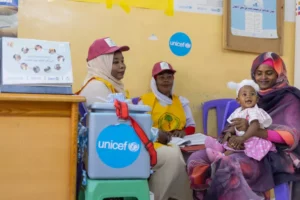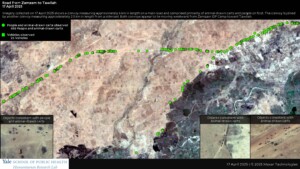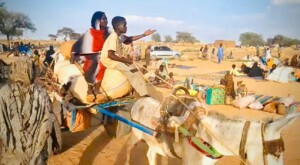Jebel Marra fact sheet: People blocked from humanitarian aid
The United Nations’ Office for the Coordination of Humanitarian Affairs (OCHA) has released an update on the humanitarian situation in Darfur’s East Jebel Marra. The office reported that up to this day, nearly 21 percent of the population in the massif has been displaced to camps for displaced people in recent months. According to a Sudanese aid commission and community leaders, this figure has tripled in the past months.
The East Jebel Marra massif lies in the centre of the Darfur region, bordering the state divisions of Central, South and North Darfur. It is a fertile region inhabited mainly by the Fur tribe and has since 2003 been the primary stronghold of the Sudan Liberation Armies (SLA). It is the only place in Darfur where armed opposition maintains prolonged control over territory and the only area in Darfur to which humanitarian organisations have had no access as of 2011.
The United Nations' Office for the Coordination of Humanitarian Affairs (OCHA) has released an update on the humanitarian situation in Darfur's Jebel Marra. The office reported that up to this day, nearly 21 percent of the population in the massif has been displaced to camps in recent months. According to the governmental Humanitarian Aid Commission (HAC) and community leaders, this figure has tripled in the past months.
The Jebel Marra massif lies in the centre of the Darfur region, bordering the state divisions of Central, South and North Darfur. It is a fertile region inhabited mainly by the Fur tribe and has since 2003 been the primary stronghold of the Sudan Liberation Armies (SLA). It is the only place in Darfur where armed opposition maintains prolonged control over territory and the only area in Darfur to which humanitarian organisations have had no access as of 2011.
For its report, OCHA focused on the mountainous areas in the centre of the massif, the 'inner Jebel Marra area', parts of which are controlled by the Sudanese government and parts by rebel fighters of the Sudan Liberation Movement, led by Abdelwahid El Nur .
Population figures
There are no reliable population statistics for the inner Jebel Marra. The latest census was completed in 2008, and then only for certain parts of Jebel Marra. The lack of access for humanitarian organisations to the area since 2011 has hampered any collection of recent data.
Current estimates indicate there are some 365,000 people living in the greater Jebel Marra, and approximately one third of those – 120,000 people – live in the inner Jebel Marra.
Knowing that some 25,000 people (of the 120,000 people in inner Jebel Marra) have been displaced to camps for the displaced in Central and North Darfur in recent months, OCHA estimates that today there could be some 95,000 people in the inner Jebel Marra area, stating that nearly 21 percent of the total population is displaced. Of these 95,000, however, HAC and community leaders have reported that some 47,600 people have been displaced in recent months; meaning that 60 percent of the Jebel Marra population is displaced.
Tearfund has reported that a total of 423 severe acute malnutrition cases from the inner Jebel Marra area were admitted to their treatment centres in February 2015. In June 2015, three national NGOs carried out an assessment to government-controlled areas of Jebel Marra (Dirbat, Dira, Kiba, Koroni, Soro, Korbal, Baimadina, Sawani, Bele-Serif, Leiba, and Jawa) and established that approximately 20,000 affected people are in urgent need of water and sanitation services, health, nutrition, education and emergency shelter. No assistance has been provided up to date.
Aid delivery blocked
Access restrictions to East Jebel Marra not only prevent humanitarian organisations and individual actors from having an exact understanding of the population numbers in the area, but also block aid to people in need, OCHA writes.
Main obstacles to free and regular access to the area include access restrictions by the parties to the conflict, preventing humanitarians from entering both government and rebel-controlled areas. Additionally, the unpredictable security situation in general: hostilities, including both ground fighting and aerial bombardment, are ongoing, according to reliable sources on the ground.
The government has also expressed concern that humanitarian aid could directly support opposition fighters.











 and then
and then